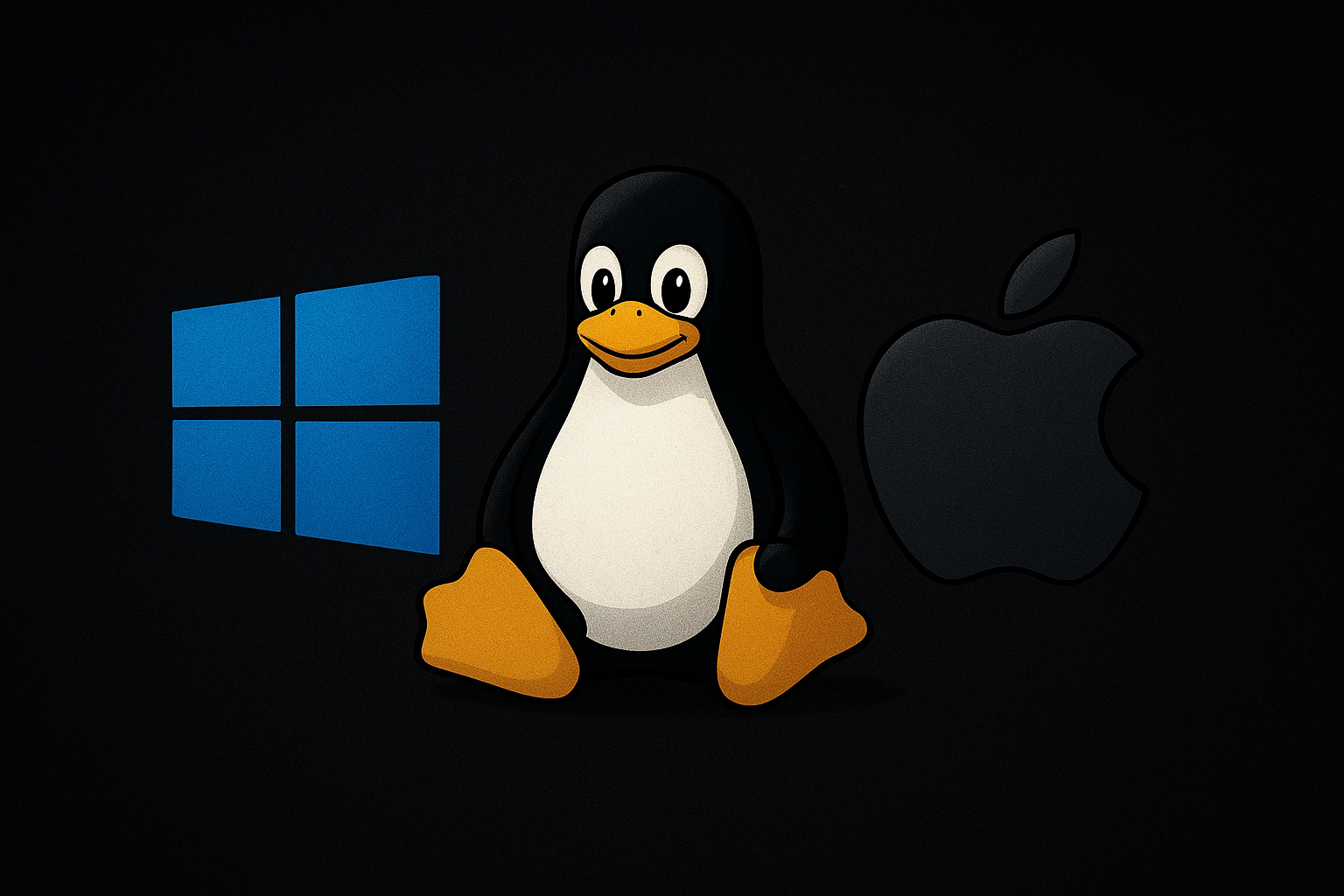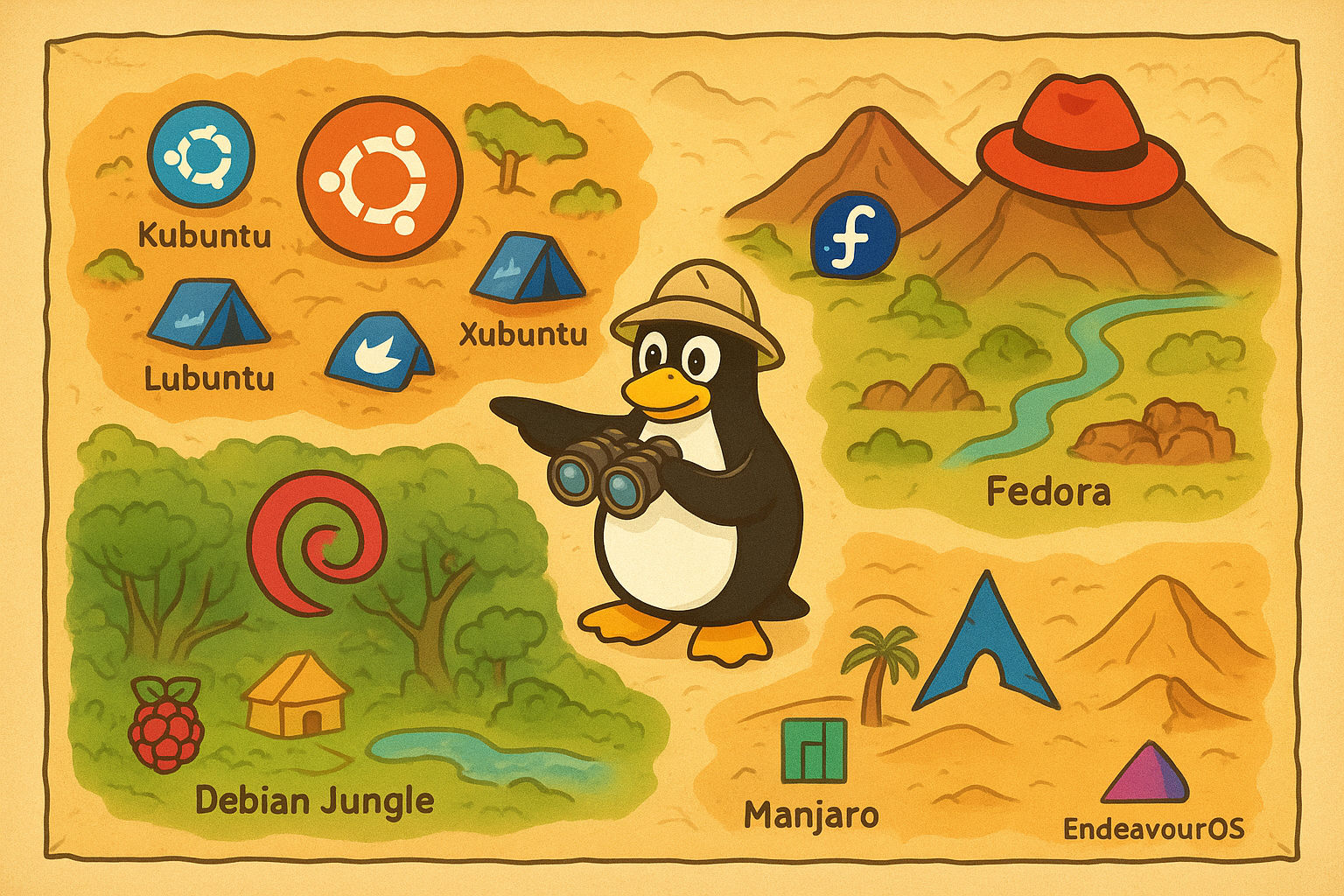A Quick Disclaimer: Before we dive in, let me be clear—this might sound like I'm some sort of Linux evangelist ready to sacrifice Windows laptops on the altar of open source. I'm not. I consider myself OS-agnostic, using whatever system makes sense for the job at hand. I spend plenty of my working day in Visual Studio (hello, Windows), I'm writing this very post on my MacBook, and sometimes I just enjoy the zen of tweaking my Linux setup on weekends. Think of this as less "LINUX OR DEATH!" and more "Hey, here's this interesting thing I discovered."
The Windows Comfort Zone (The Digital Stockholm Syndrome)
Let me paint you a picture: It's the late 90s, I'm sitting in front of a beige tower running Windows 95, and the most exciting thing in my life is whether Solitaire will load without crashing. From that first magical boot sound through university and beyond, I lived comfortably in Microsoft's walled garden.
And honestly? It was mostly about the games. Let's not kid ourselves here—Linux could cure cancer and I still would've stuck with Windows if it meant I could play the latest Bullfrog title without having to sacrifice a chicken to the compatibility gods first.
But then university happened, and with it came the terrible realization that maybe, just maybe, there might be life beyond the Start button.
The Great Awakening (When I Discovered My Wallet Was Empty)
During my university years, something shifted. My focus moved from "Will this run Counter-Strike?" to "Can I actually get some work done without my computer having an existential crisis?" Macs looked tempting with their shiny aluminum and that satisfying click sound, but they cost more than my textbooks, rent, and dignity combined.
So there I was, broke college student with a low-end Acer laptop that wheezed harder than an asthmatic at a 5K run, when someone mentioned this thing called "Linux."

The Dual-Boot Experiment (Playing with Fire)
I decided to dip my toes in the Linux waters with a dual-boot setup. This was around 2004-2005, and let me tell you, the Linux landscape was... let's call it "character building." Most essential software was still married to Windows or macOS, and getting anything to work on Linux required the patience of a saint and the troubleshooting skills of a digital archaeologist.
But I persevered! Mostly because I was too stubborn to admit defeat, and partly because there was something oddly satisfying about making a penguin-powered OS bend to my will.
Why I Even Bothered (The Three Pillars of My Linux Conversion)
Performance: When Vista Made Windows XP Look Like a Speed Demon
Let's talk about Windows Vista. Released in January 2007, Vista was Microsoft's answer to the question "How can we make Windows slower and more annoying?" The system requirements jumped from XP's modest 64MB of RAM to a whopping 512MB minimum (1GB recommended), and it ran like a sloth with a hangover
The performance issues were so bad that even after Service Pack 1, many benchmarks showed Vista still couldn't match XP's performance on the same hardware. Meanwhile, Linux distributions were happily chugging along on ancient hardware, proving that maybe you didn't need to sacrifice your firstborn to run an operating system.
Customization: From "This Is Fine" to "This Is EXACTLY How I Want It"
Initially, my customization needs were simple: "Can I make the terminal green text on black background like in The Matrix?" (The answer was yes, and it was glorious.)
But Linux spoiled me. Want a different window manager? Sure! Hate how your desktop looks? Replace the entire thing! Miss the Windows 98 aesthetic? There's probably a theme for that! It was like digital LEGO for adults—if you could dream it, you could probably configure it.
Want to see what's possible? Check out r/unixporn for some seriously impressive desktop setups that'll make you question everything you thought you knew about computer interfaces.
Philosophy: The "Stick It to The Man" Factor
Here's where things get a bit philosophical (stick with me, I promise this won't turn into a Richard Stallman lecture). Linux isn't actually the entire operating system—it's just the kernel, the bridge between your hardware and the software. The complete system is really GNU/Linux, built by developers around the world who believe software should be free.
This meant no single corporation could wake up one morning and decide to harvest my data for profit, shut down the platform, or force me to upgrade to "Windows 11: Now With 50% More Bloatware!" There was something deeply appealing about that independence, especially as concerns about digital privacy started becoming less "paranoid conspiracy theory" and more "Tuesday's news headlines."
The Beginning of My Distro Safari
Ubuntu 4.10 "Warty Warthog" had just been released in October 2004, promising to be "Linux for Human Beings." It was the gateway drug that made Linux accessible to mere mortals like myself.

But Ubuntu was just the beginning of what would become a years-long journey through the Linux ecosystem.
Each distribution taught me something different about computing, system administration, and the various ways humans can passionately disagree about package managers. Some became daily drivers that I used for months or years. Others were weekend experiments that ended with me frantically reaching for my Windows recovery disk.
The Linux Distro Decision Matrix (What Actually Matters)
While each Linux distro has its own personality and philosophy, there are three core elements that really matter in day-to-day use (with the possible exception of NixOS):
Window Managers & Desktop Environments - This is your daily view into the digital world. Are you staring at a sleek, minimal interface or something that looks like it was designed by a committee of engineers in 1995? Do windows snap intelligently or do you spend half your day playing Tetris with application windows?
Package Management - How easy is it to install that obscure text editor you heard about on Reddit? Can you update your entire system with one command, or do you need to perform a ritual involving three different package managers and a prayer to the dependency gods?
Release Cycle & Community - Does your distro update continuously (rolling release) or does it drop major updates annually like a tech company with commitment issues? When things break at 2 AM, is there a thriving community to help, or are you alone with man pages and Stack Overflow?
These three factors essentially determine whether you'll love your Linux experience or end up back in the warm embrace of Windows, muttering about how "it just worked before."
The Real Lesson
This journey wasn't just about switching operating systems—it was about understanding that there are many different ways to solve the same problems. Every distribution represents different priorities, different trade-offs, and different communities with their own cultures and quirks.
The diversity of the Linux ecosystem is both its greatest strength and its biggest challenge. Having choices is wonderful until you're paralyzed by decision fatigue, standing in front of DistroWatch at 2 AM wondering if you should try that new distribution based on Gentoo that promises to revolutionize your computing experience.
But more importantly, it taught me that being "OS-agnostic" isn't about not having preferences—it's about understanding that the best tool depends on the job. Sometimes that's the familiar comfort of Windows, sometimes it's the polished experience of macOS, and sometimes it's the infinite tweakability of Linux.
